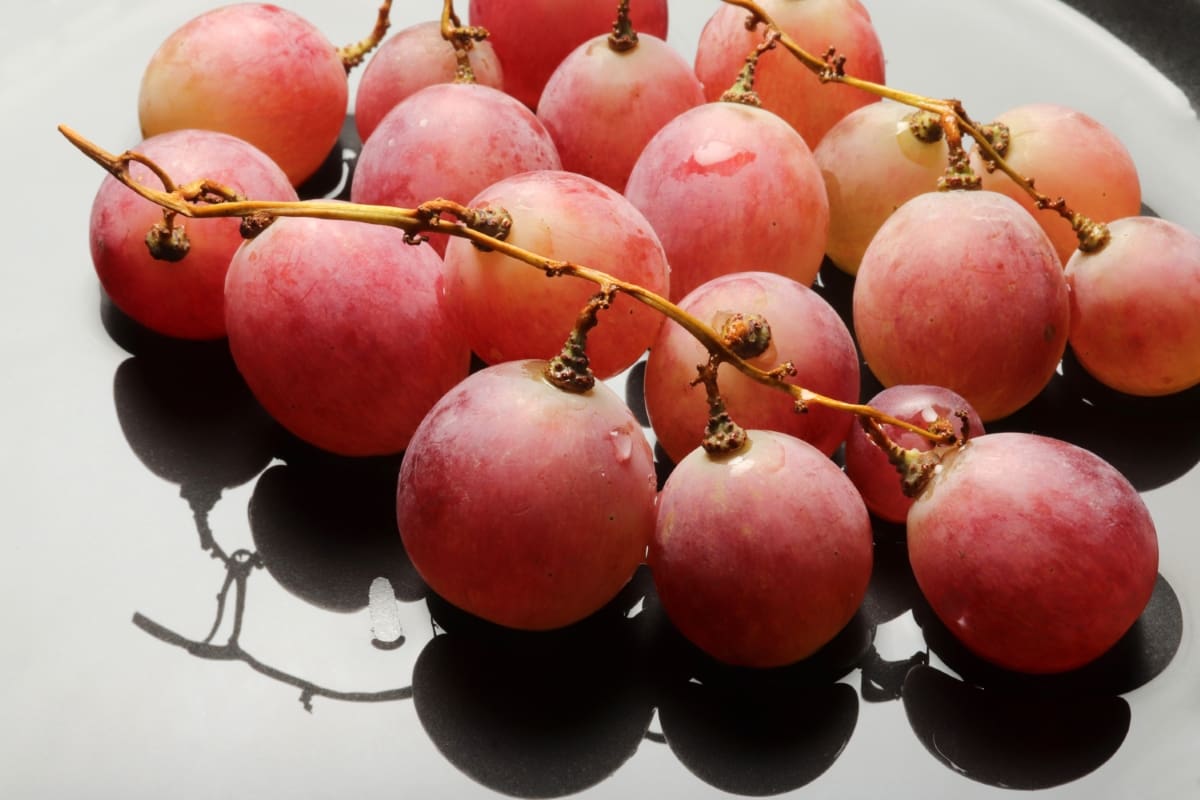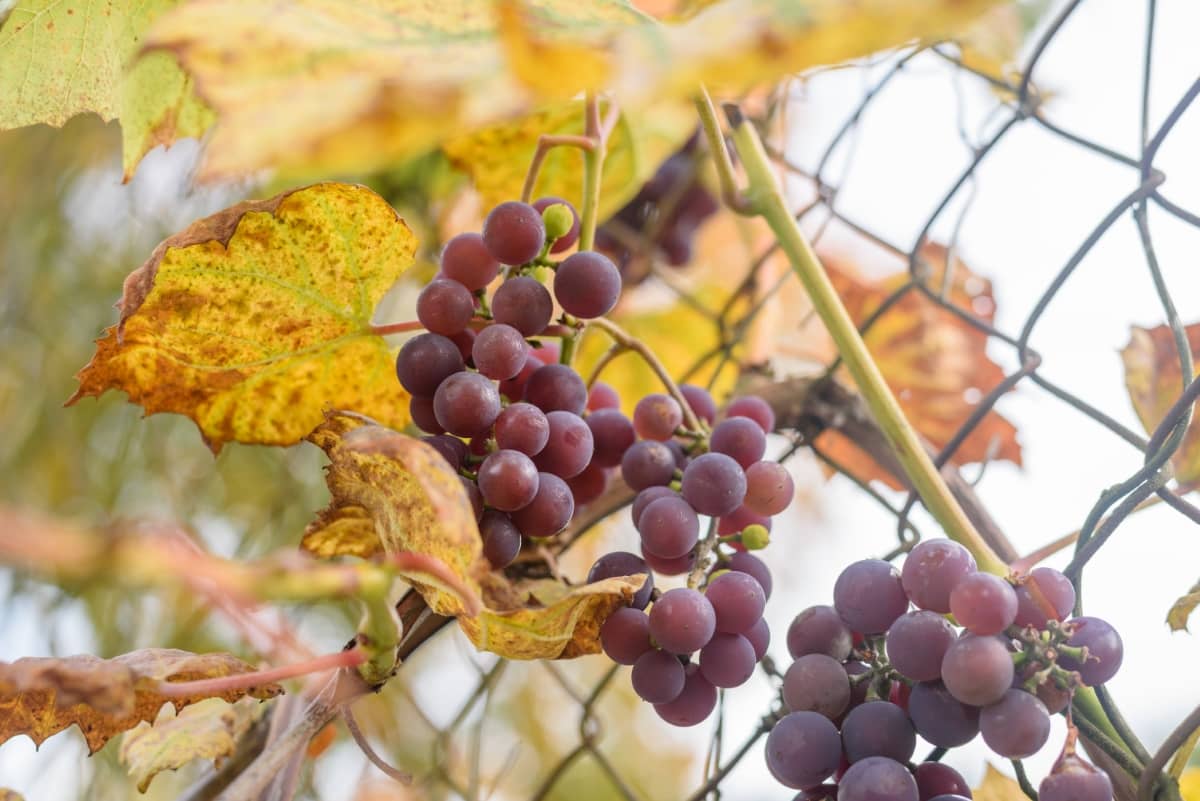Red Globe Grapes, with their striking deep red color and juicy sweetness, are a popular choice for home gardeners looking to grow their fruit. These Grapes are known for their large size and round shape, making them perfect for snacking or adding to salads and desserts. One of the key benefits of Red Globe Grapes is their high antioxidant content. When it comes to Red Globe Grape’s nutrition, Red Globe Grapes are not only delicious but also packed with nutrients that can benefit your overall health.

Growing Red Globe Grapes
Choosing the Right Location for Planting Red Globe
Choosing the right location for planting Red Globe Grapes is crucial for their growth and productivity. These Grapevines thrive in full sun, so it’s important to select a spot that receives at least 6-8 hours of direct sunlight each day. This will ensure optimal fruiting and ripening. In addition to sunlight, Red Globe Grapes also require well-drained soil.
They do best in loamy or sandy soil types that offer good drainage and allow roots to access nutrients easily. It’s also essential to consider the climate of your region when choosing a location for planting Red Globe Grapes. These vines prefer warm climates with moderate humidity levels. They are not suitable for regions with extremely cold winters or high humidity, as this can increase the risk of fungal diseases.
Soil Preparation Instructions for Red Globe Grapes
Growing Red Globe Grapes indoors can be a rewarding and enjoyable experience for any home gardener. Not only does it allow you to have fresh, juicy Grapes right at your fingertips, but it also adds a touch of beauty and greenery to your indoor space. Before planting, it’s important to ensure that the soil is well-drained and rich in nutrients. To begin, clear the area of any weeds or debris. Then, dig a hole about two feet deep and two feet wide for each vine you plan to plant. This will give the roots plenty of space to establish themselves.
Next, amend the soil with organic matter. Once amended, mix the organic matter into the existing soil thoroughly using a garden fork or tiller. Afterward, perform a soil test to determine its pH level. Red Globe Grapes prefer slightly acidic soils with a pH between 5.5 and 6.5. If necessary, adjust the pH by adding lime (to raise pH) or sulfur (to lower pH) according to package instructions.
Propagation of Red Globe Grapes
When it comes to propagating red globe Grapes, there are a few methods you can try. Growing Red Globe Grapes from seeds can be a rewarding and exciting experience for any home gardener. Growing Red Globe Grapes from cuttings can save both time and money. Instead of waiting for Red Globe Grape seeds to germinate and grow into viable plants, using cuttings allows you to establish new vines quickly.
One common way is through cuttings. Take a healthy and mature vine, preferably in the dormant season, and make 8-12-inch-long cuttings from it. Remove any leaves from the cutting and dip them into rooting hormone to encourage root development. Another method is layering, which involves burying a low-growing branch of an existing vine into the ground so that it develops roots.
This can be done by bending the branch down to soil level and securing it with stakes or rocks. Grafting is another technique used for propagation. It involves joining a desired variety of red globe Grape onto a compatible rootstock. This method allows you to combine desirable traits from different Grape varieties.
Key Strategies for Watering and Fertilizing Red Globe Vines
Watering and fertilizing are essential aspects of growing healthy and productive red globe Grapevines. To ensure optimal growth, follow these key strategies. When it comes to watering, red globe Grapes thrive in well-drained soil. Water deeply but infrequently, allowing the top few inches of soil to dry between waterings.
In case you missed it: Napa Valley Grape Farming: Napa Valley Viticulture and 1 Acre Cost in Napa Valley in California

When it comes to fertilizer, red globe Grapes benefit from regular feedings during their active growing season. Start by applying a balanced slow-release fertilizer in early spring before new growth appears. Follow up with monthly applications of nitrogen-rich fertilizer until mid-summer. Additionally, incorporate organic matter into the soil around your vines annually to improve nutrient availability and moisture retention.
Pruning and Training Red Globe Grapevines for Maximum Yield
Pruning and training red globe Grapevines is essential for achieving maximum yield in your home garden. By properly caring for these vines, you can promote healthy growth. To start, it’s important to understand the basics of pruning. Pruning helps remove dead or diseased wood and encourages the development of new fruiting canes.
Begin by removing any damaged or weak branches, as well as any suckers that may be growing from the base of the plant. When it comes to training your red globe Grapevines, there are several methods you can use. One common technique is called “cordon” training, where a single trunk is trained along a wire trellis system. This allows for better light exposure and makes harvesting easier.
Pollination in Red Globe Grapes
Pollination plays a key role in the successful growth and development of red globe Grapes. These luscious fruits rely on pollinators, such as bees and other insects, to transfer pollen from the male to the female flower parts. This is essential for fertilization and fruit set. To attract pollinators to your Grapevines, it’s important to create an inviting environment.
Planting flowers nearby that bloom at different times throughout the Red Globe Grapes growing season will provide a continuous source of nectar for beneficial insects. Some excellent choices include Lavender, Borage, Sunflowers, and Daisies.
Pest and Disease Management in Red Globe Grapes
One common pest that affects red globe Grapes is the Grapevine moth. This insect lays its eggs on the leaves, which then hatch into larvae that feed on the foliage. To control this pest, regular monitoring is essential. Another pesky critter that can cause damage to your Grapevines is aphids. These tiny insects cause stunted growth and distorted leaves.
To manage aphid populations, introduce beneficial insects like ladybugs or use organic insecticidal soaps. Fungal diseases like powdery mildew can also pose a threat to your red globe Grapes. This disease appears as a white coating on the leaves and fruit. Regularly checking your plants for signs of infection and promptly treating them with fungicides can help prevent the spread of this disease.
Seasonal Care for Red Globe Grapevines
When it comes to caring for your red globe Grapevines throughout the seasons, there are a few key tasks you should keep in mind. During the spring, it’s important to focus on pruning and training your vines. As summer rolls around, watering becomes crucial. Red globe Grapes require consistent moisture, especially during hot and dry periods. Be sure to water deeply and regularly, allowing the soil to dry out between waterings.
In autumn, it’s time to prepare your Grapevines for winter dormancy. Prune back any dead or diseased wood, as well as any excess foliage that could hinder airflow. Mulching around the vines can help protect them from extreme temperatures. During winter, protect against frost by covering your Grapevines with blankets or burlap if necessary.
When and How to Harvest Your Red Globe Grapes
When it comes to harvesting Red Globe Grapes, timing is everything. The delicious taste and sweetness of these Grapes will largely depend on when you pick them. Pay attention to the color of the Grapes. Red Globe Grapes should have a deep red hue with no green tinge left on the skin.
Another indicator is their firmness. Gently squeeze a few Grapes and make sure they feel plump and slightly soft to the touch. If they are too hard, give them some more time on the vine to develop their flavors. To harvest your Red Globe Grapes, use sharp pruning shears to cut the clusters carefully. It’s important not to damage any surrounding Grapevines or leaves in the process.
Growing Red Globe Grapes in Containers
Container gardening is a great option for those who want to grow their Grapes but have limited space. With the right Red Globe Grape care and attention, you can successfully cultivate red globe Grapes in containers. When choosing a container for your Grapevine, opt for one that is at least 20 inches deep and wide to provide enough room for root growth.
In case you missed it: How to Build a Trellis for Grape Vines: DIY From Design Layout to Installation

When it comes to growing Red Globe Grapes in containers, fill the container with well-draining soil mixed with compost or organic matter. To plant your red globe Grapevine, dig a hole in the center of the container large enough to accommodate its roots. Gently place the vine into the hole and backfill it with soil, pressing it firmly around the base of the plant. Water your container-grown red globe Grape regularly, but avoid overwatering.
Organic Methods to Grow Red Globe Grapes
- Start with healthy soil: Organic gardening begins with building nutrient-rich soil. Use organic matter to enrich the soil before planting your Grapevines. This will provide essential nutrients for their growth.
- Natural pest control: Instead of relying on chemical pesticides, opt for natural pest control methods or use homemade organic sprays.
- Mulching: Apply organic mulch around the base of your Grapevines to suppress weeds, retain moisture, and improve soil fertility. Use materials like straw, leaves, or grass clippings for effective mulching.
Red Globe Grapes Yield
The yield of Red Globe Grapes can vary depending on various factors such as weather conditions, soil quality, and proper care. In general, a mature Red Globe Grapevine can produce anywhere from 15 to 20 pounds of fruit per year. This may not seem like a lot compared to commercial vineyards, but for an amateur gardener or someone with limited space, it’s still a significant amount. Understanding the factors influencing the price of Red Globe Grapes will help you make informed decisions about purchasing them based on your budget and preferences.
In case you missed it: Ultimate Guide to Concord Grapes: From Growing to Preserving

Conclusion
Growing Red Globe Grapes in home gardens can be a rewarding and enjoyable experience. With the right location, soil preparation, watering and fertilizing techniques, pruning and training methods, as well as pest and disease management strategies, you can cultivate healthy vines that produce bountiful clusters of delicious Grapes.
- Feed Your Flock for Less: Top 10 Tips to Save on Chicken Feed
- Ultimate Guide to Ossabaw Island Hog: Breeding, Raising, Diet, and Care
- Hatching Answers: The Top 10 Reasons Your Chickens Aren’t Laying Eggs
- Eggs and Economics: Breaking Down the Cost of Raising Backyard Chickens
- Defend Your Greens: Proven Methods to Keep Iguanas Out of Your Garden
- Ultimate Guide to Cinnamon Queen Chicken: A Comprehensive Guide for Beginners
- Ultimate Guide to California Tan Chicken: Breeding, Raising, Diet, Egg-Production and Care
- Ultimate Guide to Marsh Daisy Chicken: Breeding, Raising, Diet, and Care
- 10 Types of Chicken Farming Businesses You Can Start for Profits